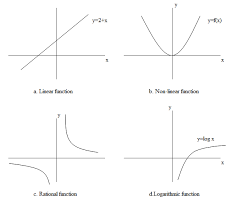
The Importance of Function in Design
In the world of design, function plays a vital role in creating products that not only look good but also serve a purpose. Whether it’s a piece of furniture, a website, or a mobile app, functionality is key to ensuring that the design meets the needs and expectations of its users.
When designers prioritise function in their work, they consider how users will interact with the product and what features are essential for its intended use. This approach helps create designs that are intuitive, user-friendly, and effective in fulfilling their intended purpose.
Functionality goes hand in hand with aesthetics in design. While the visual appeal of a product is important, it must also be practical and easy to use. A well-designed product not only looks good but also functions seamlessly to provide a positive user experience.
From simple everyday objects to complex digital interfaces, function should always be at the forefront of the design process. By focusing on functionality, designers can create products that are not only visually appealing but also practical and user-centric.
Ultimately, function is what transforms a design from being merely decorative to truly useful and impactful. By prioritising function in design, creators can ensure that their work resonates with users and makes a meaningful contribution to their lives.
Six Essential Tips for Effective Function Design and Implementation
- Plan the function in advance to ensure it meets the desired objectives.
- Clearly define the input parameters and expected output of the function.
- Break down complex functions into smaller, more manageable sub-functions.
- Use meaningful variable names and comments to improve code readability and maintainability.
- Test the function with different input values to verify its correctness and efficiency.
- Document the function’s purpose, usage, and any potential side effects for future reference.
Plan the function in advance to ensure it meets the desired objectives.
When approaching a design project, it is crucial to plan the function in advance to ensure that it aligns with the desired objectives. By carefully outlining the functions that the design needs to fulfil, designers can establish a clear roadmap for creating a product that not only looks good but also serves its intended purpose effectively. Planning the function in advance allows for a more strategic and focused design process, ultimately leading to a final product that meets the specific needs and goals set out at the beginning of the project.
Clearly define the input parameters and expected output of the function.
When developing a function, it is crucial to clearly define the input parameters and expected output. By establishing a clear understanding of what data the function will take as input and what results it should produce, developers can ensure that the function operates effectively and efficiently. This practice not only helps in writing accurate and reliable code but also aids in debugging and maintenance processes, ultimately leading to a more robust and functional program.
Break down complex functions into smaller, more manageable sub-functions.
When tackling complex functions, a valuable tip is to break them down into smaller, more manageable sub-functions. By dividing a large task into smaller components, it becomes easier to understand and work with each part individually. This approach not only simplifies the overall process but also allows for better organisation and clarity in the development of each sub-function. Breaking down complex functions into smaller units can help improve efficiency, enhance problem-solving capabilities, and ultimately lead to more effective and streamlined outcomes.
Use meaningful variable names and comments to improve code readability and maintainability.
When it comes to enhancing code readability and maintainability, a crucial tip is to utilise meaningful variable names and comments. By choosing descriptive names for variables that reflect their purpose and function within the code, developers can easily understand the role of each component without having to decipher cryptic or vague labels. Additionally, incorporating clear and concise comments throughout the codebase can provide valuable insights into the logic behind certain decisions or implementations, making it easier for others (or even oneself in the future) to navigate and modify the code with confidence. By adhering to this practice, developers can significantly improve the overall quality and longevity of their codebase.
Test the function with different input values to verify its correctness and efficiency.
To ensure the effectiveness of a function, it is essential to test it with various input values to validate its accuracy and efficiency. By testing different scenarios, designers and developers can identify potential errors or performance issues that may arise under different conditions. This thorough testing process not only helps in verifying the correctness of the function but also ensures that it performs optimally across a range of inputs, leading to a more robust and reliable design outcome.
Document the function’s purpose, usage, and any potential side effects for future reference.
When developing a function, it is essential to document its purpose, usage guidelines, and any potential side effects to ensure clarity and facilitate future reference. By documenting the function’s intended purpose, developers can maintain a clear understanding of its role within the system and how it contributes to overall functionality. Detailing the usage instructions helps users implement the function correctly and avoid errors. Additionally, noting any potential side effects allows for proactive measures to be taken to mitigate risks and ensure smooth operation within the system. Comprehensive documentation not only aids in current development efforts but also serves as a valuable resource for future maintenance and enhancements.
